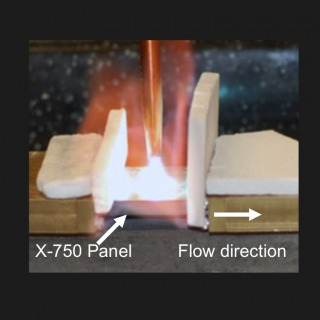
Materials for Hypersonic Flight
Hypersonic flight vehicles could enable a range of future U.S. defense, aviation and space missions. However, the extreme environmental conditions associated with high Mach number flight pose a major challenge for vehicle materials and structures, particularly within the hybrid ramjet/scramjet/rocket propulsion systems envisioned to date. In propulsion systems such as those utilized in commercial and military gas turbine engines, the performance requirements are sufficiently well understood that property goals for materials development can be set and new materials developed and tested in isolation from the propulsion design process with reasonable certainty of success. The complexity of hypersonic propulsion systems, however, requires closer coupling of design principles with new materials development to achieve expanded levels of performance and structural durability.
The overarching goal of this research is to define new strategies for development of structural materials for air-breathing hypersonic propulsion systems. The approach includes (a) development of a suite of materials models that integrate key material properties with design models, (b) creation of new characterization and test techniques that support model development and (c) employment of these new modeling and characterization techniques to direct development of emerging materials and for discovery of new materials systems.




